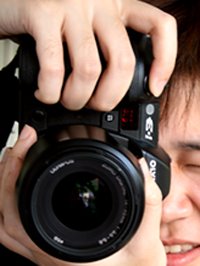Almost every digital camera made today—with the exception of very inexpensive VGA-resolution cameras—comes with a built-in flash unit. The flash is a way to bring extra light with you and brighten many kinds of pictures. On the other hand, I have found that most people don’t really know how to take advantage of the flash that is built into their camera, so in this chapter I discuss techniques like fill flash, red eye reduction, and bounce flash. Lighting isn’t just about using a flash, either. You can use a reflector to spread light around for a more pleasing effect, and play with the white balance built into your camera for better lighting control as well.
These days, most digital cameras have an electronic flash unit built right into the camera body. The flash is designed to fire for a very short period of time and illuminate your scene in one of two ways:
1) As the main source of light indoors or in the dark
2) As a secondary source of light to fill in shadows when you’re shooting in bright light, such as outdoors
In general, your flash will probably know when to fire and can illuminate most pictures without your direct intervention. When your camera is set to the fully automatic exposure mode, the flash will probably come on as needed and not fire when it is not needed. On the other hand, you can probably figure out when you need a flash more effectively than your camera can. There will be situations when you may want your flash to fire when it would probably stay off, and vice versa. That’s why your camera has several flash modes to choose from.
skip to main |
skip to sidebar

Menu
- 1) The birth of digital camera (1)
- 2) How the camera work ? (1)
- 3) Homemade camera (1)
- 4) Difference between SLR and Compact camera (1)
- 5) Overview of Camera accessories (1)
- 6) Buyer's guide (13)
- 7) The photographer tips (6)
- 8) Composition (9)
- 9) Exposure (9)
- Flash Photography (4)
- Lens (9)
- Share your space/blog with us (1)
- The Depth of field (2)
- Why you want to be a photographer? (1)
Posting History
What is your camera brand?
Contact us
- Admin
- Do not keep your idea/comment with you , please share it by mailing to takepics@gmail.com. Thank you for visiting
Thanks
shot!




